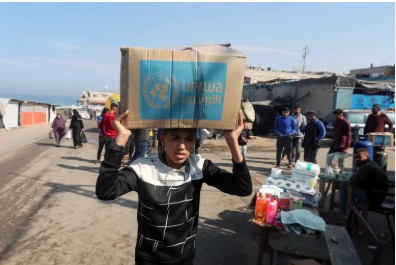The region also witnessed extreme weather conditions, such as exceptionally high temperatures, low air humidity, and severe droughts, resulting in record-breaking wildfires in countries like Argentina…reports Asian Lite News
The World Meteorological Organisation (WMO) has issued a warning that extreme weather events and climate shocks were becoming increasingly acute in the Latin American countries that are grappling with severe droughts and disease outbreaks caused by flooding.
According to a recent WMO report on the state of the climate in 2022, Latin America and the Caribbean were caught in a “vicious cycle of spiraling impacts” of accelerated warming and sea-level rise, the AFP reported.
Although some recent events can be attributed to the La Niña climate phenomenon, WMO Secretary-General Petteri Taalas emphasized that they also bear the signature of “human-induced climate change.”
Taalas further cautioned that the onset of El Niño is expected to exacerbate the situation, intensifying extreme weather patterns in the region. El Niño is characterised by higher-than-average sea surface temperatures in the central and eastern Pacific near the equator, while La Niña has the opposite effect.
Highlights of the WMO report released in Havana:
Between 1991 and 2022, Latin America and the Caribbean experienced a notable warming trend, with an average increase of approximately 0.2 degrees Celsius per decade, marking the highest rate on record. This warming was particularly pronounced in Mexico and the Caribbean. Additionally, sea levels in the South Atlantic and subtropical North Atlantic rose at a faster pace than the global average, heightening the risk of coastal flooding and contamination of freshwater sources.
The region also witnessed extreme weather conditions, such as exceptionally high temperatures, low air humidity, and severe droughts, resulting in record-breaking wildfires in countries like Argentina and Paraguay. These wildfires, in turn, contributed to a surge in carbon dioxide emissions, which reached their highest levels in two decades, exacerbating the problem of rising temperatures.
Furthermore, heavy rainfall triggered floods and landslides that led to numerous fatalities and billions of dollars in economic losses. The Parana-La Plata Basin, spanning Bolivia, Brazil, Paraguay, Uruguay, and Argentina, experienced the most severe drought since 1944. Reduced river flows hampered hydropower production, necessitating the use of polluting fossil fuels as substitutes for hydroelectric energy sources.
Chile has been grappling with an unprecedented mega-drought lasting 14 years, making it the most severe drought in the region in over a millennium. Glacier melt has intensified, with the Andean glaciers experiencing near-total loss of snowpack during the 2022 summer. Consequently, the darker glaciers absorbed more solar radiation, accelerating the pace of melting.
Alarming concerns arise from the fact that only approximately 60 percent of the population in Latin America and the Caribbean is covered by early warning systems for severe weather events.












